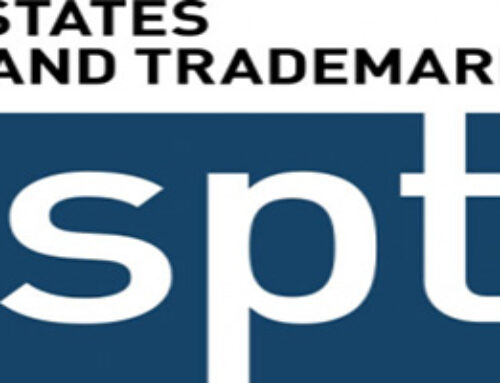There are many ways of accomplishing the goal, and many considerations about who, what, when, where, and how to go about teaming. This paper gives some structure to the decision-making process, and suggests that the analysis focus on the right questions, in search of the right answers.
First Principle
Well before the solicitation comes out in final form, we must strive to create the winning team. Note that I didn’t say “get on the winning team” because I don’t believe that usually the winning team exists in the abstract. It is our job to create that winning team. More on this later.
(What follows is a sanitized version of a paper I wrote in 1990 about a specific opportunity. By taking out the details, the result is an example, a discussion of a particular search for teaming partners that sheds light on general principles).
Operating Hypotheses (Assumptions)
Let’s look at some assumptions or beliefs:
1. XYZ represents a factor in the marketplace that is so strong that our presence on a team could (not “will” or “must”) make the difference to a prime between winning and losing.
2. Of the four deliverables (hardware; facilities management; software conversion; training) XYZ has demonstrated capability to deliver three (dubbed from here forward the “three XYZ deliverables”: facilities management, software conversion, and training), on time and within budget. Our specific relationship with this customer (which may grow significantly as we win the BOZO PROGRAM and others, through our ongoing marketing efforts) adds credibility to our team.
3. Because cost/price is an issue, and because Pool Two costs are the lowest available, The Pool Two cost models and factors will be used. There may be significant detailed as well as policy issues that are raised as a result of this assumption, but we’re better off knowing them now than later. My sense is that our CEO, Charlie C, wants us to make things happen in the best, most advantageous way, and let the administrators and accountants catch up later, if necessary.
What is the Customer Looking For?
This is another way of phrasing “Who will make the procurement decision? What criteria will be used?” that I have used in many different situations. It is Marketing 101 to know this. If our best collective belief was exposed at the February 29 meeting, I offer this formulation of what the customer is looking for:
1. Low price offer (Our customer is famous — or notorious — for awarding to the vendor offering the lowest believable price.)
2. Low technical risk (unlike the DoD or DOE, our customer can’t take a chance on gee-whiz, risky technology to solve its problems.)
3. Low schedule risk (Our customer needs its systems delivered on time.)
In addition, our customer may respond to another cost/price consideration: low price RISK. For cost-type contracts, there is a great difference between offering a low price, and delivering a low price. The superior, winning approach can be that “The ABC/XYZ Team offers not only low price, but low uncertainty about ultimate price the customer will pay”.
Three-Step Action Plan
Step 1. Reach a tentative judgment about the four primes with the greatest probability of winning the competition, in the absence of XYZ on any team. Using the criteria we believe the customer will use, do a “Strengths and Weaknesses Analysis” of each prime, for each of the N deliverables, and including the intangibles (such as Vendor A’s do-or-die position in the federal market.) This means a “4 criteria by N deliverables” exhibit, plus other intangibles, for each prime. For each prime, estimate a probability of win.
Step 2. For each of the top four, XYZ makes a presentation of our own view of the customer’s decision criteria, and our own capabilities. In exchange, we solicit presentations (say, the next week) by each of the primes as to why XYZ should choose the ABC team (by our own criteria, we tell each prime that we’re looking to create the winner.) In the strict legal sense, we’re not making offers to team, we’re soliciting offers from the primes to team. If we do a good job, we set up a “Chinese Crunch” situation, in which we are in a position to choose from between/among competing offers to team, but only XYZ has information about the offers of the competing parties. The crunch is in the form of “you’ve gotta do better than that”.
We explain to all primes that our commitment is to create the winning team, or to no-bid. Implicitly, if the primes are persuaded by our arguments, the non-chosen may themselves opt to no-bid, and thereby narrow the field.
Step 3. On the basis of the presentations by the primes, create the winning team that maximizes our participation in the work effort. Mechanically, we revisit our analysis from Step 1 to display the influence of the addition of the XYZ capability to the existing prime’s capability, and show how that reshuffles the win probability distributions. We’re likely to find that there is one prime that can win only if it teams with us (and further, although not certainly) and that is the team that looks like a winner. For example, Big Orange may have an inherent cost/price advantage (lower conversion costs from existing systems to new hardware systems), but is weak in two of the other three deliverables. The XYZ addition means the Big Orange/XYZ Team offers the Winning Approach in three of the four customer criteria, including low price (and, incidentally, low price uncertainty).
No Guts, No Glory???
Without argument, this schema is gutsy, and it differs from the recommendations made by Glenn S on February 27th. Presuming (but then, through our briefing to the primes, proving) that XYZ is creating the winning team is bold. It is also true that, by creating circumstances in which the primes to come to us, we maximize our own share of the winning bid, and can get control of important parts of the proposal creation process, including the all-critical cost/price issues.
Importance of Cost/Price and Primary Action Item
Since cost/price is so important, I suggest that we launch an immediate task force to explore the relationships between alternative technical and management approaches and cost/price. This will get complicated, but is bounded by the four classes of deliverables. Presenting the methodology (but not the numbers, of course) to the four primes helps to convince them that XYZ is serious about winning, and that an important part of our contribution to the team is both low price, and low price uncertainty. The theme is “Our previous experience with similar programs/ position in the marketplace and therefore economies of scale/proprietary products/cadre of experienced programmers allows us to offer (training, facilities management, software conversion) at lower prices and with greater uncertainty about prices”.
If we’re really gutsy, we could try to influence the customer to solicit proposals (or, alternatively, allow alternate proposals) that switch some deliverables where we have an advantage from cost-type to fixed price!!
Another consideration: because of the lack of a CLIN for program management, an important issue on cost is how to handle that; options are as a charge to indirect, burying it in the separate funded efforts, or swallowing it as a contribution to the program. However, this lack of a CLIN for management could be an oversight. The customer may change that in the final version of the solicitation. If so, our response to this would change appropriately.




Leave A Comment